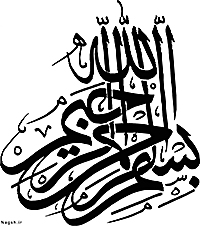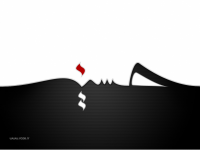Mourning … Part 6
- Created by bineshan on 07 Dec 2015
- Categories: Articles Imam Hossain
Mourning …
Part 6
Tradition of mourning among the people of the past
Mourning was a tradition among previous Prophets (SBUT) and their followers. Let us look at few reports mainly from sunni books and the bible:
1) Hadrat Adam’s and Hadrat (Hawwaa’s- Eve’s- mourning for Hadrat Haabeel- Abel- (SBUT)
The father and mother of humanity (Hazrat Adam (a.s.) and his wife Hazrat Hawwa (a.s.)) wept for their son Haabeel for so long that their tears turned into a stream.
(The Sunni Taarikh-e-Yaqoobi, vol. 1, pg. 3)
2) Hadrat Ya’qoob’s- Jacob’s- weeping in his separation from Hadrat Yusof- Joseph- (SBUT)
This is how the old testament of the christian bible- equivalent to what the jews call torah- say:
Genesis 37:34 And Jacob rent his clothes, and put sackcloth upon his loins, and mourned for his son many days.
37:35 And all his sons and all his daughters rose up to comfort him; but he refused to be comforted; and he said, For I will go down into the grave unto my son mourning. Thus his father wept for him.
This is what the Majid Qur’an says in regard to Hadrat Ya’qoob’s (SBUH) sorrow:
Qur’an 12:84 And he turned away from them, and said: O my sorrow for Yusof! and his eyes became white on account of the grief, and he was a repressor (of grief).
Qur’an 12:85 They said: By Allah! you will not cease to remember Yusof until you are a prey to permanent illness or (until) you are of those who perish.
Qur’an 12:86 He said: I only complain of my grief and sorrow to Allah, and I know from Allah what you do not know.
3) Mourning for Hadrat Haaroon- Aaron- and Hadrat Moosa- Moses- (SBUT):
As we have repeatedly mentioned in different writings in this site, all Prophets and their Allah Chosen Successors (SBUT)- who tasted death on this earth- were martyred; as a sample Hadith indicating this matter, it has been narrated from Imam Baaqer (SBUH) who has said that in the night when the Amir al-Mo’menin (SBUH) was killed, under every stone which was lifted fresh blood was observed, and it was so in the night that Haaroon (Aaron) brother of Moosa (SBUT) was killed, and the night when Yoosha; son of Nune (Joshua son of Nun) was killed, and the night when ‘Eesa son of Maryam (Jesus son of Mary) (SBUT) was lifted up to heaven, and the night when Sham’oon son of Hammoon Safa (Simon Peter) was killed, and the night when Hosain son of ‘Ali (SBUT) was killed. (Kaamel al-Ziyaaraat, p. 76; …)
In the old testament of the christian bible- equivalent to what the jews call torah- it is stated that the bani (children of) Israel mourned thirty days after the deaths of Moses and Aaron:
Book of numbers 20:29 And when all the congregation saw that Aaron was dead, they mourned for Aaron thirty days, even all the house of Israel.
Book of Deuteronomy 34:7 And Moses was an hundred and twenty years old when he died: his eye was not dim, nor his natural force abated.
34:8 And the children of Israel wept for Moses in the plains of Moab thirty days: so the days of weeping and mourning for Moses were ended.
4( Christians
As we know, christians believe that Jesus was the son of God who was the same as God Himself, and he was crucified. It is important to mention that early followers of the Prophet ‘Eesa (SBUH) did not believe in crucifixion of Jesus at all … but later when this man made distortion was imposed on the followers of the Prophet Jesus (SBUH), christians used to mourn for Jesus based on biblical traditions.
Professor Franco Amato, an Italian orientalist, states that historical documents indicate that during the middle ages in Europe christians used to form mourning processions and groups for Jesus in Italy, France, Germany, Poland, Spain and …; during some of which they tried to relive some of the tortures they believed Jesus had suffered. Similar gatherings still exist in southern Italy, Spain, Philippines and …
A surviving trace of those mourning gatherings is the famous Latin hymn the “stabat mater”:
“The title of the sorrowful hymn is an incipit of the first line, Stabat mater dolorosa ("The sorrowful mother stood").” (Stabat Mater, Volume 68 by Girolamo Abos, Joseph Vella Bondin 2003, page xviii, as cited in the English Wikipedia.)
“The Stabat Mater hymn, one of the most powerful and immediate of extant medieval poems, meditates on the suffering of Mary, Jesus Christ's mother, during his crucifixion. It is sung at the liturgy on the memorial of Our Lady of Sorrows.” (the English Wikipedia.)
“The Marian hymn Stabat mater is generally ascribed to Jacopo da Todi (ca. 1230-1306).
“The Stabat Mater was well known by the end of the 14th century and Georgius Stella wrote of its use in 1388, while other historians note its use later in the same century. In Provence, about 1399, it was used during the nine days processions.” (Catholic encyclopedia, as cited in the English Wikipedia.)
It is also noteworthy to mention that according to Professor Franco Amato the first historical document mentioning a special style of mourning processions for Jesus by christians dates back to the year 1260 CE in which it is stated that a monk known as Ranieri Fasni started this style of mourning in the streets of Perugia, Italy.
Considering the origination date of such style of mourning in Europe, it is quite possible that christians- during the Crusade Wars with Muslims (about 11th to 13th christian centuries) and also during expansion of the Fatimid caliphate from north Africa to South Europe about the same centuries- were introduced to acts such as mourning processions (dating back few centuries before then among Muslims) which had successfully preserved vital events such as ‘Aashoora. Christians observing those mourning processions for Imam Hosain (SBUH) perhaps tried to adopt and adjust them to fit their own beliefs and traditions. This kind of derivation from traditions among Muslims seems to have also possibly occurred in regard to the rosary used by some Christians which started during the same centuries, while the Muslims used Tasbih (prayer beads) from the time of the Prophet Mohammad SAWA himself; we cordially invite readers to the article “Truth behind ‘Lady of Fatima’” in this site: kindfather.com in this regard.
Again, as confirmed by the Majestic Qur’an, the Infallible Ones (SBUT), and even some older christian documents Hadrat ‘Eesa (SBUH) was never crucified, but still the thought of the sufferings that christians have believed their beloved Jesus went through have caused them so much restlessness … now, if christians were to realize that one of those whom Jesus loves the most, i.e. Hosain grandson of the lord of all Prophets, Mohammad (SBUT) … together with eighteen of the bani-Haashem who were unequalled in history … with companions who were unique in loyalty … with his six month old infant … after unjustly suffering so much heart-rending hardships were truly martyred while they were thirsty … if christians were to realize that the women and children … granddaughter of the Prophet Mohammad, Zaynab, the three year old daughter of Hosain, Roqayya (SBUT) and … were brutally captured and …, what are they going to do? Please refer to “Zebh ‘Azim (Grand Slaughter)” and “The real 'Eesa -Jesus- (PBUH), or a figment of imagination called jesus?” in this site: kindfather.com
Imam Hosain (SBUH) is he whom Jesus (SBUH), centuries before his birth, had, repeatedly and wholeheartedly, mourned and cried for his Oppressedness (for a sample see “Jesus in Karbala” in this site), and now Jesus is tearfully awaiting the Emergence of the last Infallible descendant of Hosain- Imam Mahdi- (SBUT), to join him and together avenge the blood of Prophets and their Allah-Chosen Successors (SBUT) …
Throughout history, the True followers of Prophets (SBUT) have always cried for losing the most beautiful and beloved creations of Allah, the Prophets and their Successors (SBUT) … for the oppression and pains they have suffered … for the distortions and lies … for Hosain (SBUH) … for living in a world without the full Truth, without the Appearance of the Promised Savior … thus there are still statements narrated from Jesus (SBUH) in the bible which praise such mourning and give the glad tidings of a time when finally, after the return of the savior, true happiness shall also return to sorrowful hearts …:
Matthew 5:4 Blessed are they that mourn: for they shall be comforted.
Luke 6:21 … Blessed are ye that weep now: for ye shall laugh.
Also in regard to the Last Days it is said:
Matt. 24:30 And then shall appear the sign of the Son of man in heaven: and then shall all the tribes of the earth mourn …
To be continued …
In the name of God

Ebooks
- MUHAMMAD AND THE AHLULBAYT (SBUT), THE PROMISE OF Bible
- The Najran Pact,
Mobaahelah (Mubahilah)
- Ghadir Declaration of the Truth from creation to eternity
- Truth Behind Christian Commemorations
- Hijab A Divine Ordinance, ordained by all Prophets of Allah (SBUT)
- Dajjaal … Antichrist (NEW)
- Truth behind the claim of hom os exuality and ... (NEW)
- Mourning... (NEW)
- What the Bible Says About Muhammad (Peace Be Upon Him) the Prophet of Islam (NEW)
- A description of the collection (Mawsu’ah-Encyclopedia) Kalimah al-Imam al-Mahdi al-Hujjat ibn al-Hassan al-‘Askari (‘Alayhima al-Salaam) (NEW)
How to search
1: click here.
2: type your "Search keywords".
3: If you are searching a specific article set "Keyword settings" to "Exact phrase".
4: In "Filter search by type", only check the "Pages".
5: Click on "Search now"
